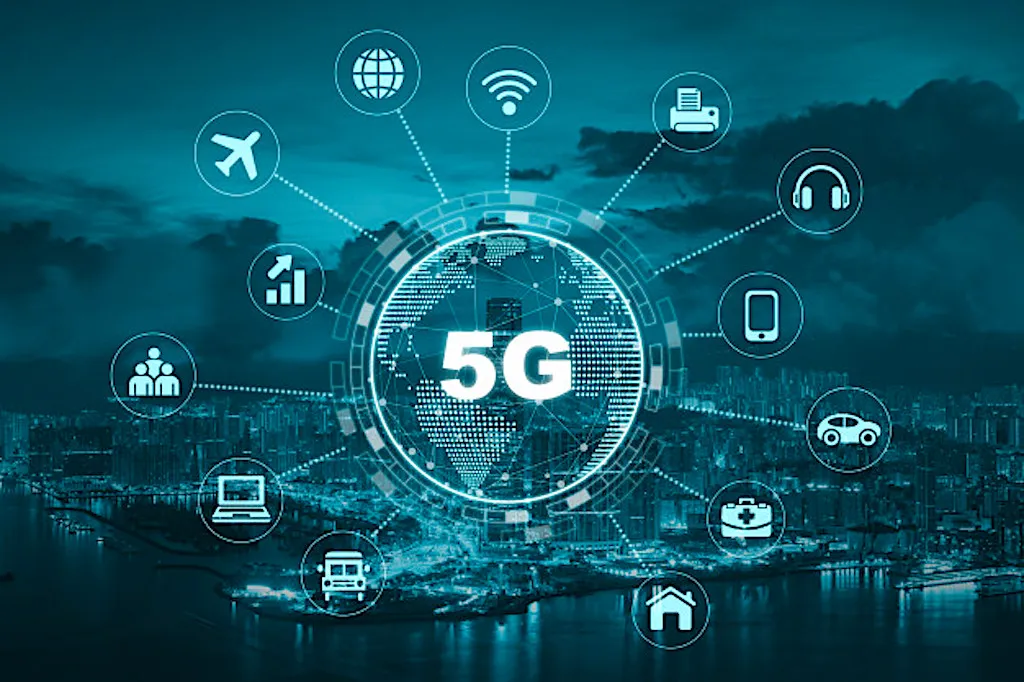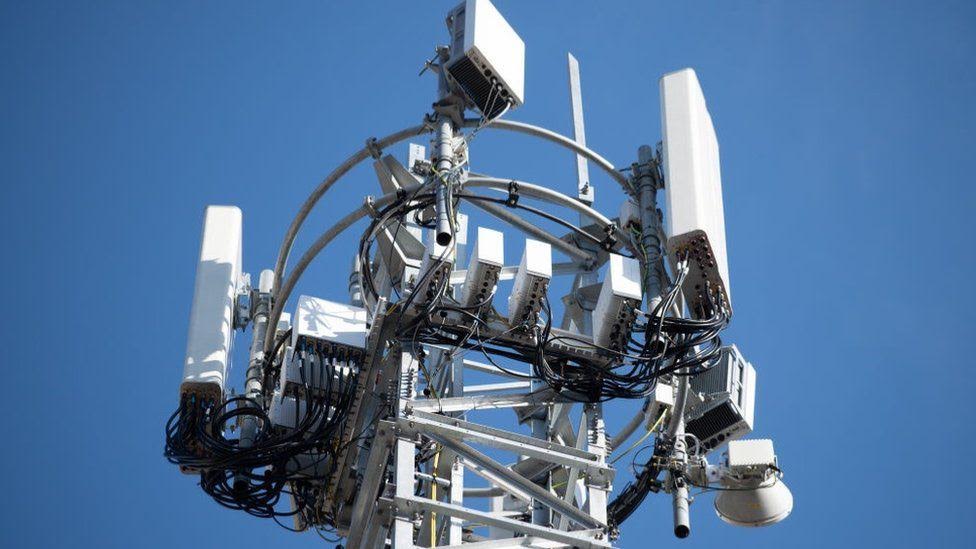The promise of the 5G network in Nigeria has stirred considerable buzz since its launch. Telecom operators and government regulators alike heralded ultra-fast internet speeds, ultra-low latency, and transformative connectivity across the country. But nearly three years after the commercial debut, the reality paints a starkly different picture. With a penetration rate still languishing below 3 %, the 5G rollout appears stuck, like a wheel clogged before it even turns.
Table of Contents

5G’s Modest Progress
According to the latest data from the Nigerian Communications Commission (NCC) as of April 2025, 5G penetration sits at just 2.81% of active mobile subscriptions—fewer than 4 million users nationwide. In contrast, older technologies remain dominant: 4G accounts for nearly 49.27%, while 2G still holds close to 39.67%, and 3G lingers at around 8.25%.
This slow climb is baffling. Nigeria launched 5G services back in September 2022, with MTN and Airtel leading the charge. MTN rolled out in numerous major cities, including Lagos and Abuja, and as of early 2025, boasts over 2,100 live 5G towers across 13 state.s Airtel got its 5G license in early 2023 and has activated services in Lagos, Ogun, Rivers, and FCT. Meanwhile, Mafab Communications—also licensed in 2021—has yet to activate a single operational 5G site despite pledging coverage in major cities like Abuja and Kano.
Key Roadblocks to 5G Adoption
1. Economic and Currency Pressures
Multiple reports highlight Nigeria’s harsh economic climate as a crucial barrier. The local currency has depreciated by over 200% between 2021–2024, driving up the cost of imported telecom equipment. In 2023 alone, telecom operating expenses rose nearly 51%, from ₦2.09 trillion to ₦3.16 trillion, fueled by rising diesel fuel costs, inflation, security expenses, and foreign exchange losses. Without substantial currency stability or capital buffers, operators have struggled to fund nationwide rollout.
2. Infrastructure Fragility and Vandalism
Authority voices such as ALTON’s chairman, Gbenga Adebayo, cite widespread sabotage of telecom hardware and insufficient grid infrastructure as major culprits. Many towers operate on diesel generators due to frequent outages—a model that is both expensive and unreliable. This environment discourages fresh investment and expansion of advanced networks like 5G.
3. Device and Consumer Constraints
A significant number of Nigerians still rely on 2G and 3G phones. Entry-level 5G-capable smartphones currently cost upwards of $300, placing them out of reach for a majority of consumers. Without affordable devices and tailored data plans, uptake remains limited. And where 5G plans exist, data is priced prohibitively—often around ₦3 per MB, which deters heavy usage for streaming, cloud services, or gaming.
4. Demand Lag and Value Perception
Experts like Ladi Okuneye note that many consumers find 4G service “adequate” for their needs, undermining the urgency to upgrade. Operators, still recouping significant investments in 4G infrastructure, might be hedging further expansion until returns meet sustainability thresholds.
5. Regulatory and Policy Frictions
Operators and analysts suggest that spectrum licensing fees, delays in right-of-way permits, and overlapping taxation regimes increase deployment friction. Regulatory clarity and streamlined processes are needed to incentivise rapid scaling beyond city centres.

The Broader Market Context
While Nigeria’s 5G adoption lags, this is reflective of a broader African trend. Across the continent, uptake remains modest due to similar economic, infrastructural, and policy constraints. Only a handful of countries—such as South Africa, which launched 5G in 2020—have seen subscriber penetration reach double-digit percentages (South Africa now claims roughly 50% population coverage and over 10 million users).
In Nigeria’s case, poor network quality further dampens enthusiasm. Despite a rising number of subscriptions (mobile teledensity reached nearly 79.7% in March 2025, with broadband volumes exceeding 995 TB), Nigeria ranked 105th out of 137 countries in the Opensignal Global Network Excellence Index for overall quality and 121st for speed. While its 5G speeds ranked relatively better at 46th, the overall user experience remains below international standards.
Industry Outlook: The Road Ahead
Recovering Through Tariff Revisions
Telcos recently secured a 50% tariff adjustment approved by NCC in early 2025—though operators had asked for 100%. ALTON’s leadership expects this adjustment to support debt recovery and new investment in infrastructure, including further 5G deployment. They emphasise a renewed focus on customer satisfaction and product optimisation.
Potential of 5G‑Powered Solutions
Experts increasingly highlight the transformative potential of combining 5G with IoT—from smart agriculture and precision farming to remote health care, logistics, fintech, and education. Industry voices, including cybersecurity specialists, warn of looming IoT vulnerabilities but see strong growth potential if Nigeria addresses affordability, literacy, and regulation simultaneously.
Strategic Recommendations for Growth
To break the current logjam in the wheel of 5G adoption, a few concerted actions are needed:
- Device Financing and Localisation: Encouraging manufacturers to produce low-cost 5G handsets or establishing financing schemes that make devices more accessible.
- Spectrum Reform: Regulators must consider reducing spectrum licensing fees and fast-tracking reallocation to lower the hurdle for network expansion.
- Infrastructure Partnerships: Shared tower infrastructure or public–private partnerships can reduce capital burdens and accelerate rollout.
- Consumer Awareness Campaigns: Educating users on the tangible benefits of 5G—like faster streaming, smoother cloud usage, and emerging IoT services—can stoke demand.
- Digital Literacy and Security Oversight: Coupling rollout with education programmes and cybersecurity enforcement can ensure adoption is both informed and safe.
- Rural Focus: Effectively deploying in underserved areas to expand coverage and close the urban–rural digital gap.

Conclusion
The 5G deployment in Nigeria is emblematic of a wheel that’s jammed, not broken entirely, but obstructed by multiple interlocking clogs: economic volatility, infrastructure fragility, device access limitation, and regulatory friction. The clog in the wheel of 5G network services in Nigeria is not insurmountable, but it is complex.
Operators like MTN and Airtel are slowly building momentum, and recent tariff reforms provide some fiscal space. Yet, broader ecosystem shifts are essential. Without cohesive policy, investment, consumer access, and targeted infrastructure growth, 5G in Nigeria risks remaining an elite-managed network rather than a truly inclusive digital engine.
For the technology to deliver on its promise—beyond urban elites and into farms, clinics, classrooms, and SMEs across the country—Nigeria must align its economic policies, deployment strategies, and demand-side initiatives. Only then can the 5G wheel finally begin to spin unhindered.
Summary Table
| Dimension | Status / Recommendation |
|---|---|
| 5G Penetration | ~2.81 % (April 2025) |
| Dominant Networks | 4G (~49 %), 2G (~40 %), 3G (~8 %) |
| Economic Constraints | Currency depreciation, rising operational costs |
| Infrastructure Issues | Vandalism, weak grid power, high generator dependency |
| Consumer Barriers | Expensive devices, limited awareness, costly data plans |
| Regulatory Bottlenecks | Spectrum fees, permits delays, fragmented policies |
| Recommended Actions | Tariff support, device financing, IoT education, rural rollout, regulatory reform |
By focusing on targeted solutions and coordinated strategy, Nigeria can transform the clog in the wheel of 5G network services into a gear for the next wave of digital transformation.
Join Our Social Media Channels:
WhatsApp: NaijaEyes
Facebook: NaijaEyes
Twitter: NaijaEyes
Instagram: NaijaEyes
TikTok: NaijaEyes








































